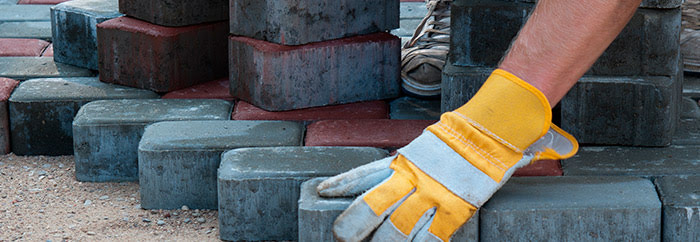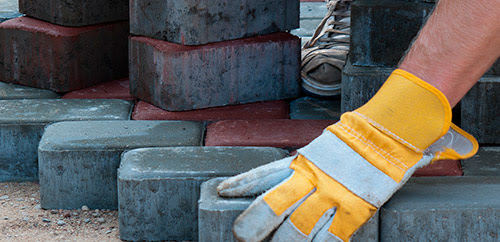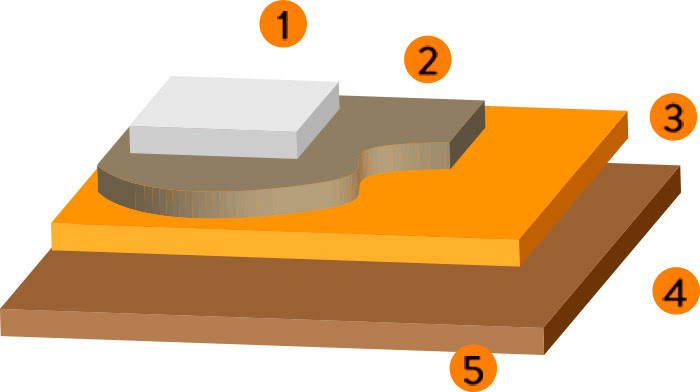- SERVING BROWARD AND PALM BEACH
- INFO@TERRAREMODELING.COM
 1 - 866 - 232 -4156
1 - 866 - 232 -4156



Paver Surfaces are recognized as very low maintenance when compared to other pavement alternatives.
It is important, however, for installers to understand and identify the potential pavement distress that can occur. Many of these distresses can be addressed during the installation of the pavers. The number one cause of pavement failure is settlement from inadequate compaction.
As explained before, preparation of the base and the bedding sand plays a big role in a long lasting paver surface. In some special situations, such as pool decks and near curbs, proper compaction is hard to achieve and settlement may happen.
To fix distressed areas, pavers can be removed. Generally settlement that exceeds ¼ inch should have the pavers removed and the problem addressed before it gets worse.
In order to get your paver surface restored to near original conditions, three basic steps must be cleared: 1) Stain Removal, 2) Overall Cleaning and 3) Sealing
There are proprietary cleaning, products specifically designed for concrete, natural stone and clay brick. Many have been developed through extensive laboratory and field testing to ensure cleaning effectiveness. Overall cleaning of the pavement can start after stains are removed.
Sealing the surface is recommended as it contains the joint sand, prevents buildup of dirt and slows fading. This process involves spreading a liquid sealant over the surface and into the joints between the pavers or tile where it is allowed to cure and harden. Sealing is not required, but highly recommended by installers and manufacturers alike. For exterior flooring is usually a few days process.
It is usually washed away over time with the rain and the process is expedited in particularly wet areas, however, use of certain cleaning products containing detergents and acid dilutes will remove the efflorescence from the surface. As you can see, scheduled maintenance such as the addition of extra joint sand and occasional resealing of the surface is highly recommended to preserve the look and feel of the original product.

Paver with sand filled joints
2Beeding sand nominal 0.25” - 1.00”
3Compracted aggregate or stabilized base to suit traffic and enviromental conditions 4” to 8”
4Geotextile as required by design/structure
5Compacted soil sub - grade
As you can see, we offer a wide variety of exterior flooring products and services that can be summarized into Natural Stones Pavers, Concrete Brick Pavers (commonly known as Pavers) and Clay Bricks.
Natural Stone Pavers come from a variety of natural sources and are hand crafted to the different finishes and sizes available. Marble, Travertine, Granite and Coral are typical materials and are available in many different natural colors. Since these are sourced from nature, color and texture may vary from one stone to another. This quality is what gives Natural Stone the unique beauty and distinctiveness that is so sought after. Pricing for Natural Stone Pavers varies greatly depending on the type of stone, source and season. The size of the stone/paver and the pattern selected will influence the final price of the project.
For outdoor living applications, by far, the safest and most economical Natural Stone product is the tumbled Travertine.
Don’t get confused, Travertine is not Marble or Granite. Travertine is a form of limestone. It often forms near hot bubbly mineral rich springs. Gas bubbles become trapped and create a pitted surface on the stone. Similar to limestone, travertine also varies in hardness, density, and porosity. Some travertine stones are harder than others. Travertine colors are in warm earthy tones. From the softest ivories to the palest creams. Rich shades of golden honey and silvery greens to deep mocha browns. Travertine never appears as one solid color. The color tones vary and veins or bands of contrasting color run throughout the stone. No two stones or tiles are alike. If you plan to tile with travertine stone, lay out all of the tiles first. This will help with the flow of color and veining. It will give you a feel for the stone.
Interlocking Concrete Brick Pavers are often a less expensive solution for outdoors. It is man made and you can find a much ample range of colors and combinations of them. Concrete Based Pavers are, as it name suggests, based on either grey cement as the main material (less expensive) or white cement (a little more expensive). Concrete Based Pavers are manufactured in a myriad of colors and shapes and can be arranged in many ways to form a desired pattern. Of the three main categories, Concrete Based Pavers’ pricing can be situated at the bottom of the list. There are small variations in pricing from one brand to another which, in most cases, can be attributed to manufacturing quality. A sub-category for this group is the artistic paver’s line, which are high-end stamped concrete based pavers with additional chemicals to make them stronger and more resistant to weather.
Clay Bricks, such as Old Chicago Bricks, Old Barcelona and simple Clay Pavers belong to a different family of products given the physical and chemical characteristics of them. Clay is probably the oldest base material used to form bricks and one of the most resistant to color fading. Clay Bricks are known for the earthy and “fired colors”. The fired color of clay bricks is influenced by the chemical and mineral content of raw materials, the firing temperature and the atmosphere in the kiln. For example pink colored bricks are the result of high iron content, white or yellow bricks have higher lime content. Most bricks burn to various red hues, if the temperature is increased the color moves through dark red, purple and then to brown or grey at around 2,372 °F. Calcium silicate bricks have a wider range of shades and colors, depending on the colorant used. Clay Bricks are inherently more porous and much more resistant to color fading than concrete bricks. Concrete bricks are mechanically and structurally more resistant to surcharge than clay bricks.
Installation of either Interlocking Concrete Pavers or Natural Stone Pavers is technically defined as a sand set procedure. Depending on the surcharge (weight on top the structure per unit of area), special bedding or coarse sand is compacted on top a firm base of rock or any stable or stabilized surface or grade. At this point, and considering other technical details, the surface is ready to start laying down the material. Once the material has been laid down, the perimeter of the structure is secured via anchor pavers, plastic edge restrain or Portland cement. This step will guarantee that the final product does not fall apart. The final step consists in washing in sand between the joints of the open surface. This sand will add the required structural stability and will prevent rocking and moving of the bricks or stones. Preparing the area, which consist in measuring soil, grading and compacting is key for a long lasting product
POOL DECKS REPAIRS, Sunken or broken pavers, Loose or damaged coping, Loose or damaged waterline tile, Pool Pumps, Pool Filter, Pool Caulking, Pool Piping
POOL DECKS FLOORING, Concrete Brick Pavers, Travertine Pavers, Marble Pavers, Clay Bricks/Pavers, Coral Bricks/Pavers, Flagstone, Pebble/River Rock, Stained Concrete
DRIVEWAYS, Concrete Brick Pavers, Travertine Pavers, Marble Pavers, Clay Bricks/Paver, Poured Concrete
POOL & SPA RENOVATION, Pool & Spa Remodeling, Pool Resurfacing, Pool Equipment Installation
OUTDOOR LIVING, Outdoor Kitchens & BBQ Islands, Outdoor Waterfalls, Pergolas, Concrete Structures, Granite Tops
PAVER MAINTENANCE (SEALING & MARBLE RESTORATION), Solvent or Water Based, Silanes & Siloxanes, Acrylics, Urethanes, Water Based Epoxy, Joint Sand Stabilizers (Polymeric Sand)